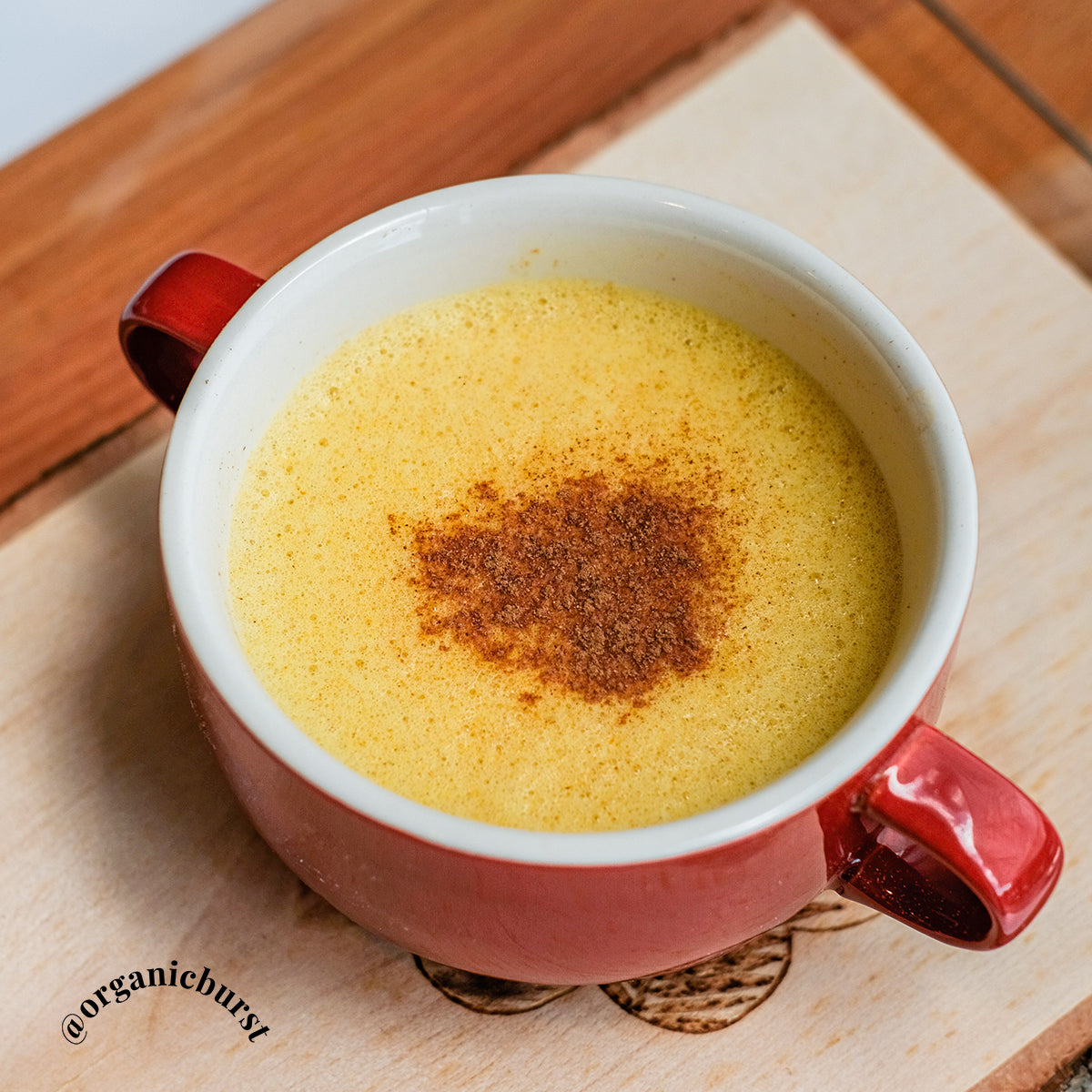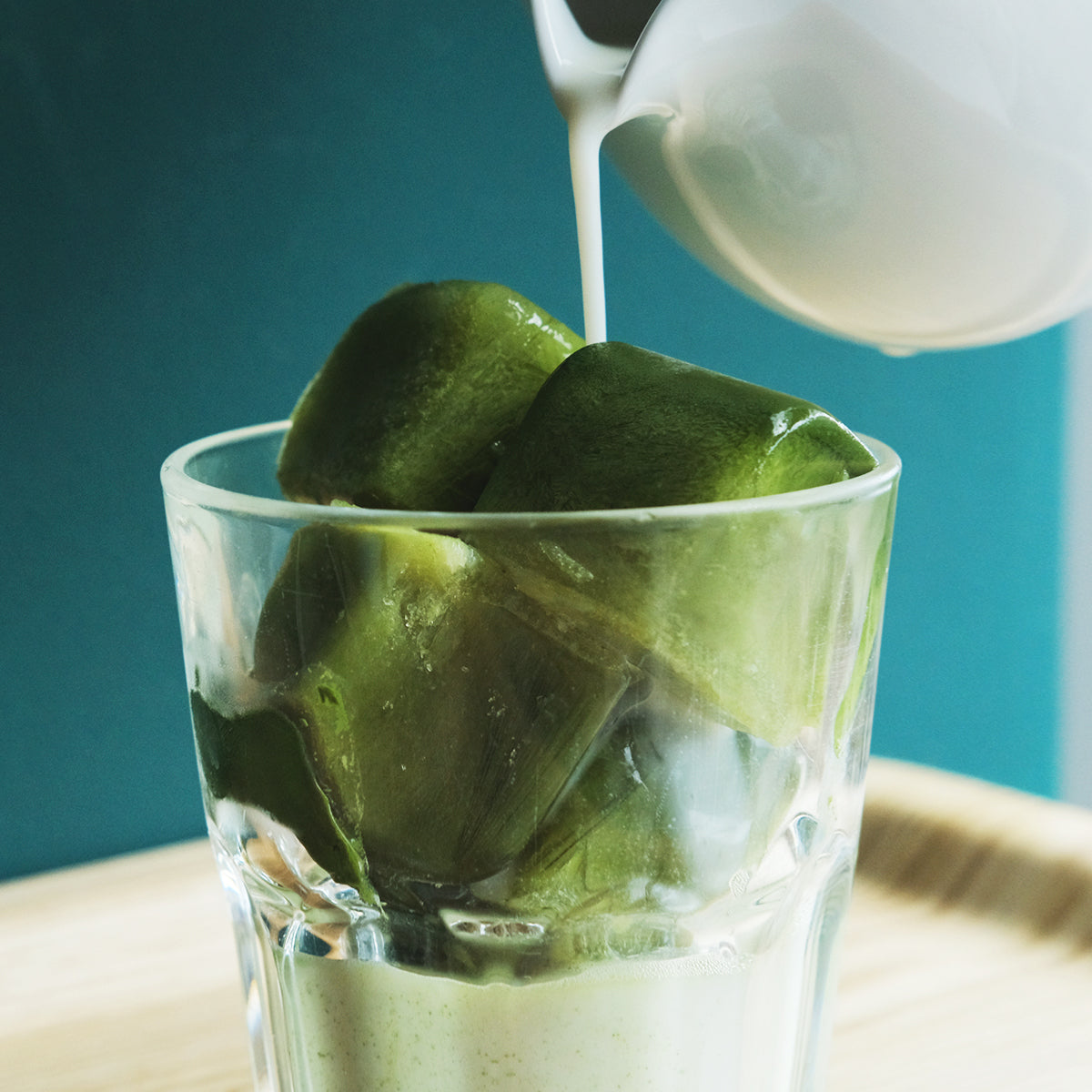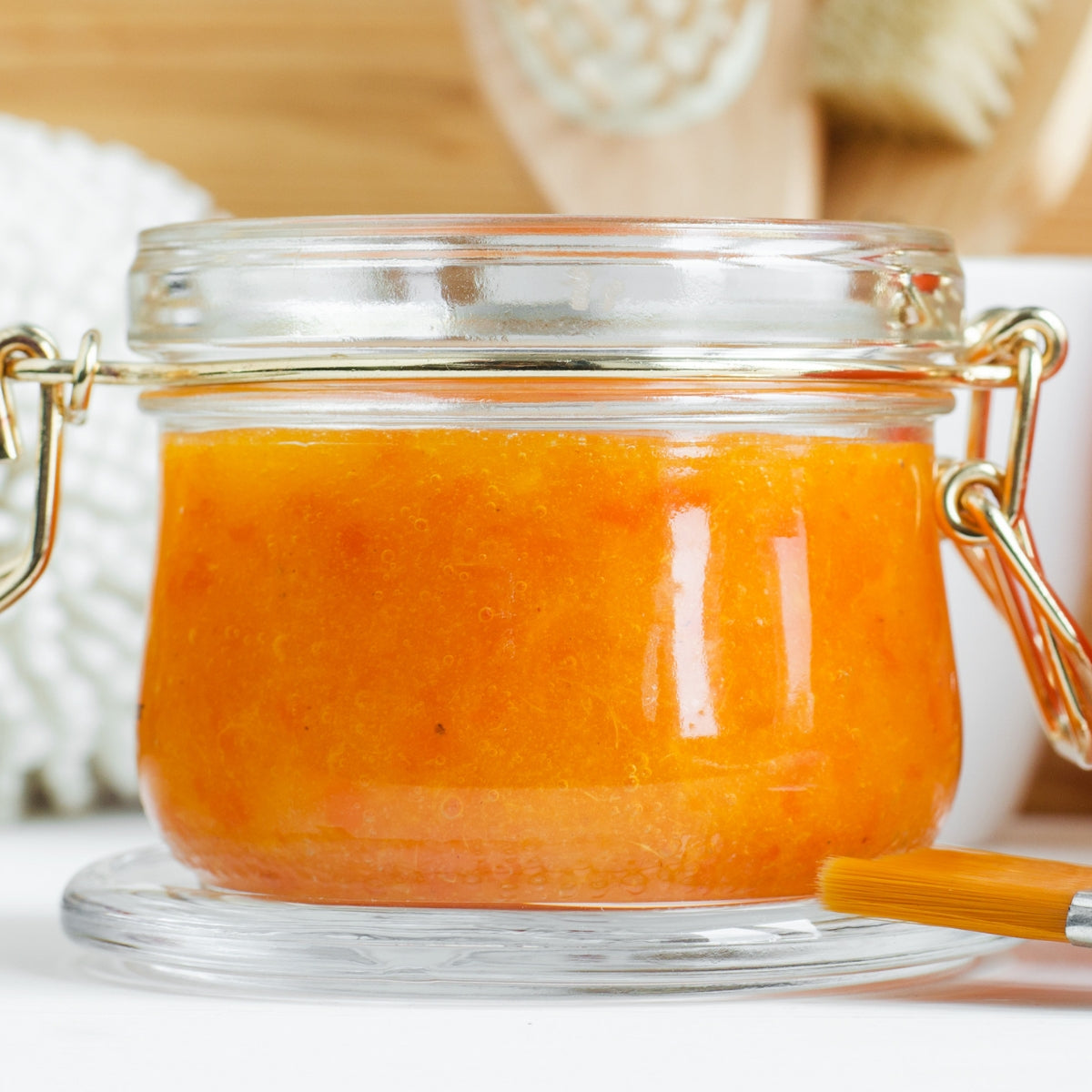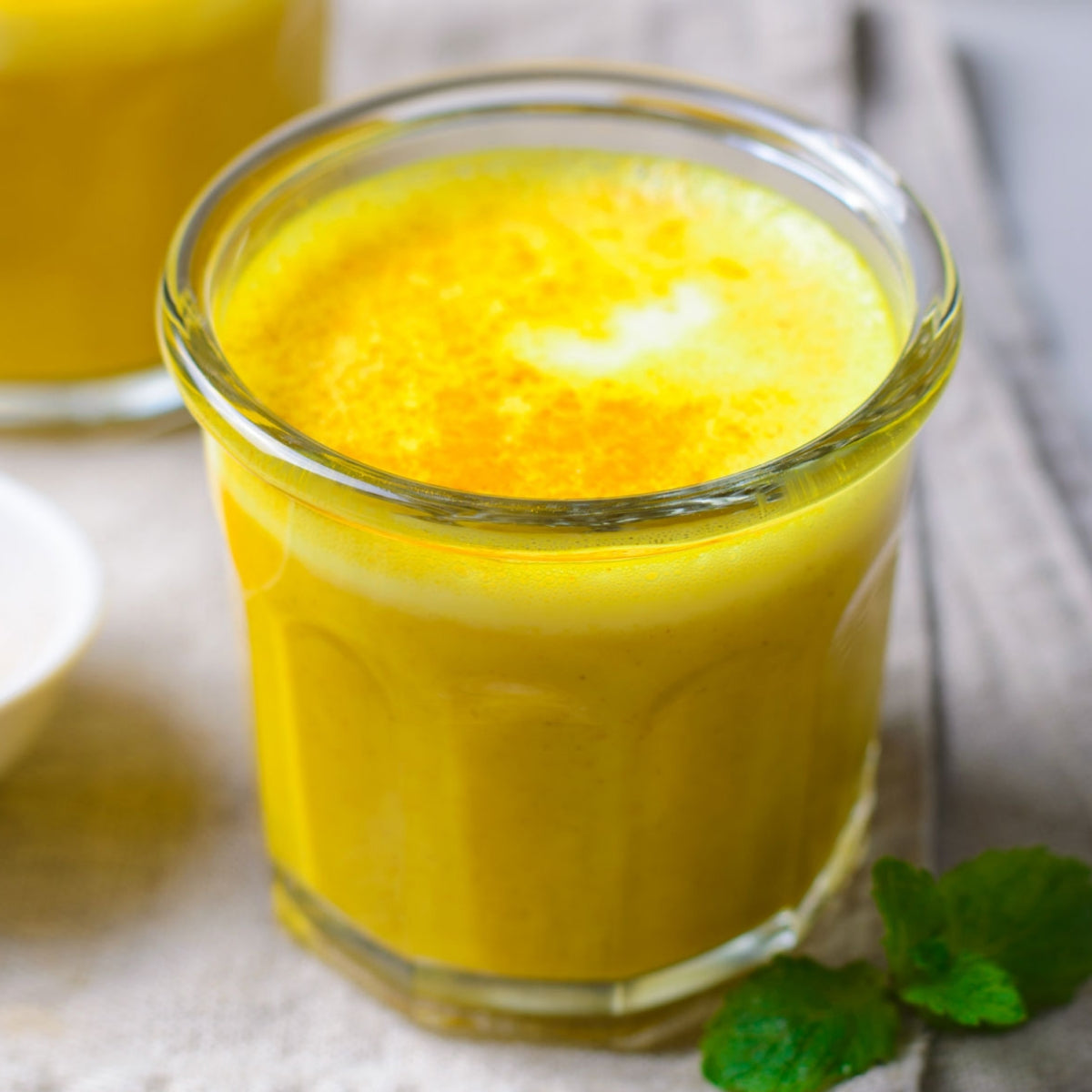The smell of turmeric and sandalwood is filling the air as the Indian bride, dressed in an exquisite yellow sari, is having a bright orange paste applied to her face, neck, hands and feet by the older ladies in her family, who at the same time whisper wishes of happiness and blessings for a wonderful married life.

This is the traditional ‘haldi ceremony’ or ‘turmeric ceremony’ that takes place separately over at the groom’s house too on the morning of, or day before, a Hindu wedding. An incredibly fragrant paste of haldi (turmeric), sandalwood and rose water is mixed and spread generously over the skin of the bride and groom in a ritual said to ward of evil and to calm anxiety and pre-wedding jitters.
The turmeric paste is brightening and exfoliating for the skin, prevents pimples and is also used to protect the couple from a host of ailments and illnesses thanks to the medicinal properties of the plant.
Single friends and family members also get the haldi treatment – after touching the paste, they’ll meet their own perfect partner! Such a beautiful ritual and belief shows just how significant turmeric is in Indian culture – not only in the kitchen.
Outside of India, we’ve been gradually catching-up in our knowledge of the value of turmeric, with an incredible amount of scientific research going into its benefits, as well as trendy drinks and recipes popping up in cafes and juice bars.
We’re absolutely loving this revival, but now that turmeric has become a global trend, the myths associated with it have recently exploded too.
Let’s address these mighty misconceptions about turmeric right now…
Myth 1. "Turmeric Is All About Curcumin"
Most of the research from the last 10 years has focussed on just one of turmeric’s many phytocompounds – the famous curcumin pigment that makes it such a vibrant yellow. Scientists have since taken the pharmaceutical approach of isolating a single component to manufacture curcumin supplements in the lab.
In an eye-opening article about how whole turmeric heals the brain, Greenmedinfo – the world’s most evidence-based natural medical resource - explains:
“But, curcumin isolates are only capable of conferring a part of turmeric’s therapeutic power…
Truth be told, there is no singular ‘magic bullet’ in foods and herbs responsible for reproducing the whole plant’s healing power. There are, in fact, in most healing plants or foods hundreds of compounds orchestrated by the intelligent ‘invisible hand’ of God or Nature or whatever you wish to call it, and which can never be reduced to the activity of a singularly quantifiable phytocompound or chemical.”
Sayer Ji, founder of Greenmedinfo
The composition of turmeric includes many other compounds – one of which is aromatic-turmerone that’s been discovered to offer neurological benefits in cases of brain injury. (Source: Stem Cell Research & Therapy, 2014)
To name just a few of the other compounds, we have: alpha-turmerone and beta-turmerone, turmeric oil, curcuminoids (including curcumin), demethoxycurcumin, 5’-methoxycurcumin, and dihydrocurcumin, which are all found to be natural antioxidants and have similarly impressive properties to curcumin. And all of them work together in natural synergy for even better results!
It’s the whole turmeric plant – not its individual isolates – that has been cherished and used traditionally across cultures and medicinal systems including Ayurveda, Traditional Chinese Medicine, as well in as Sri Lankan, Arabic and Ancient Greek medicine for thousands of years.
Myth 2. "Turmeric Has No Benefits Without Black Pepper"
This myth stems from the development of lab-made curcumin supplements, it does not relate to whole turmeric in its natural form that is perfectly bioavailable – able to be absorbed and used by the body – on its own, just how nature intended!
When supplements of the isolated compound curcumin were developed, scientists found its bioavailablity was terrible, so they worked on a solution. Piperine, another isolated (oh the irony) nutrient from black pepper was found to increase the absorption by 2,000% by inhibiting the quick metabolism of the compound through the liver and intestine (Source: Planta Medica, 1998).
What all this means is the pepper extract helps the curcumin stick around in the body longer by slowing down the liver’s action of detoxification – giving your body more of a chance to reap the benefits.
Interestingly whole black pepper has the same effect on many other plant compounds, vitamins and medicinal drugs, so a generous grind of pepper can be a great addition to meals to enhance your overall nutrient absorption. But it’s by no means essential, you’ll still get the incredible benefits of turmeric if you eat it without any pepper.
Ginger, along with pepper, is a widely used bioavailability enhancer and has been used in ancient Indian formulations to treat a wide range of diseases for thousands of years. Cumin is another tasty spice that shows similar properties. Try adding a thumb of ginger, or teaspoon of cumin to your turmeric inspired meals and drinks. It’s not all about pepper!
Myth 3. "Turmeric Needs Added Fats To Be Absorbed"
At the risk of sounding repetitive, this is another confusion with isolated curcumin supplements.
Turmeric, in its natural whole form contains turmeric oil that boosts the availability of the curcumin compound by 7-8 times!(Source: Nutritionfacts.org ‘Boosting the Bioavailability of Curcumin’ 2014)
The natural oils work by channelling the beneficial nutrients into the lymphatic system, partly bypassing the liver and so avoiding the liver’s over-exuberant metabolism of curcumin that would mean it got packaged up for a swift exit from the body before it could be absorbed.
You can gladly include healthy fats with turmeric recipes, we do this ourselves for a better-balanced meal or drink – like coconut oil baked turmeric cauliflower – yum! However, there is no reason to think it’s the only way to get the benefits.
Myth 4. "You Need to Eat A Lot Of Turmeric To Get Any Benefits"
With a sole focus on curcumin and forgetting the hundreds of other compounds in turmeric, which have just as many benefits, many believe that you’d have to eat masses of turmeric to get results.
However, we know from the extensive use of whole turmeric in traditional medicinal systems that just ½ to 1tsp is used therapeutically and for preventative health.
For instance, in the Journal of Herbal Medicine (2000), 1.3–3.0 g of turmeric root is recommended to treat dyspepsia (equivalent of ½ -1tsp).
Our dried and powdered turmeric root is concentrated to higher than average market standards as we use 8kg of fresh turmeric to produce 1kg powder. That’s 2.7x the normal 3-4kg of fresh root that’s used as standard.
Simply because Organic Burst Turmeric is so powerful, we recommend that you start with ½ tsp and gradually increase to 1tsp, that you can even take twice a day if you have a particular requirement.
For instance, if you’re exposed to a lot of free radicals like pollution, smoke, pesticides in your food, or need to help down-regulate inflammation that occurs when you’re dealing with food intolerances, ongoing stress or have a chronic condition.
Try our Golden Turmeric Curry, Golden Hummus for a delicious snack and Turmeric Tibetan Tea for a comforting evening drink.
Myth 5. "Grocery Store Turmeric Provides The Benefits You Need"
When eating a food to obtain health benefits, especially if you’re choosing it to help with a serious condition, it’s absolutely essential to choose wisely so you experience benefits rather than harm and don’t waste precious time and money on an ineffective product that might lead you to give up on an incredibly powerful plant.
Questions to ask when making your choice: what’s the plant species, where and how is it grown, how is it treated after harvesting, does it contain any toxins or additives, is it potent, is it ethical?
Often this information isn’t readily available or even known by stores. And in the case of turmeric, there are sadly some practices that mean it’s vital to choose carefully.
For instance, an artificial colouring, the toxic azo dye Metanil Yellow, is commonly used in turmeric powders. Studies have linked it to neurotoxicity and cancers.
No thank you – Organic Burst Turmeric is tested and completely free from this and other harmful additives!
We have a strong relationship with our Sri Lankan farmers, who use traditional methods to grow the special heirloom variety of turmeric we love. It has longer, finer roots that are better able to absorb nutrients from the soil, so you actually get more benefits when taking it.
Ampara, the region in Eastern Sri Lanka where our turmeric grows, has the perfect balance of tropical heat, rain and humidity for a superior turmeric and it’s harvested at its nutritious peak for the best possible potency and benefits.
Cheaper, poorer-quality turmeric from Vietnam is often exported via Sri Lanka in order to claim it’s grown there. Harumph ☹️
In addition to the point we mentioned above about Organic Burst Turmeric being much more concentrated, it also contains up to 5.1% curcumin. The content of curcumin in turmeric powders usually ranges between 0.58% and 3.14% (averaging 1.51%). So ours contains 3.4x more than the average, meaning more benefits for you!
Don’t just take it from us!
“It’s the best turmeric I have ever had. You can tell immediately that the quality of it is better than so many others out there. I will not be using any other turmeric but yours now.”
Adele by email
“It looks so much more golden and beautiful than my other organic turmeric! And the taste is amazing!”
Melanie Ramos @orange_blah_blah on Instagram
Myth 6. "Turmeric Is 'Heating'"
Because the turmeric plant is known and used as a spice, some people believe that it must have a ‘heating’ effect and could be a problem for certain constitutions and even exacerbate inflammation, phlegm and take your Pitta dosha out of balance. (Huh? Explanation below!)
This is a misconception – there is no notion that turmeric is heating in Traditional Chinese Medicine or Ayurveda.
Turmeric in fact is tridoshic in Ayurveda, meaning it can be taken by all three doshas - pitta, kapha and vata. Doshas are energies that each individual possesses, they perform different functions in the body. Our specific Ayurvedic constitution is made up of a combination of these 3 doshas, whereby people tend to be dominant in 1 or 2 of them that determine physiological and personality traits.
Pitta dosha controls your body’s temperature, digestion and nutrient absorption. Typical physical problems of this dosha include skin inflammation, acne, heartburn, insomnia and dry eyes.
How turmeric can help: Turmeric is a powerful anti-inflammatory, supports the skin and assists digestion. However, if used in excess, turmeric can aggravate Pitta, so be sure to stick to our daily serving of 1tsp or 4 capsules.
Kapha dosha controls growth, supplies water to all areas of the body and maintains the immune system. There is a tendency towards overweight and slow digestion. Typical problems include colds, congestion, asthma and allergies.
How turmeric can help: Turmeric is an excellent immune supporter with its potent antioxidants, antibacterial and antiviral properties. Its anti-inflammatory benefits are important in bowel health and can support those suffering from IBS.
Vata dosha controls blood circulation and heart, breathing and blinking. Tends to have cold hands and feet, worry, fear and anxiety when under stress, try skin and hair.
How turmeric can help: Turmeric reduces inflammation and pain, helping the healing process, improving blood flow and supports healthy cholesterol. It can lift the mood and reduce feelings of being overwhelmed when under pressure.
With so many ways turmeric can help each type of constitution, don’t miss out by believing this ‘heating’ confusion!
Myth 7. "Turmeric Stains Your Teeth"
It’s true that the bright golden yellow can stain a wooden spoon and sometimes the ends of your fingers but amazingly not your teeth! Using turmeric as a natural whitener is recommended by many natural health experts and is a growing trend as more people move away from damaging chemical whiteners.
The oral health benefits of turmeric on the teeth, gums and whole mouth include reducing plaque, gum irritation and bacteria. With so many Bursters asking about tooth benefits, we created a post dedicated to teeth whitening with our own DIY paste recipe and we're already hearing about its great results!
"I just started brushing my teeth with your Pro-tip: [Turmeric] coconut oil and salt. My teeth feel cleaner than an actual dentist visit"
@suga_hil, on Instagram
If you follow our instructions in the post about rinsing thoroughly and following up with your usual tooth paste or powder, no yellow traces will remain, just a brighter smile.
We really hope the article helped alert you to some of the misunderstandings around turmeric and to realise the true extent of this amazing plant’s benefits. It might even be the spark for a few healthy debates between you and your friends. Keep it kind people! 😂














